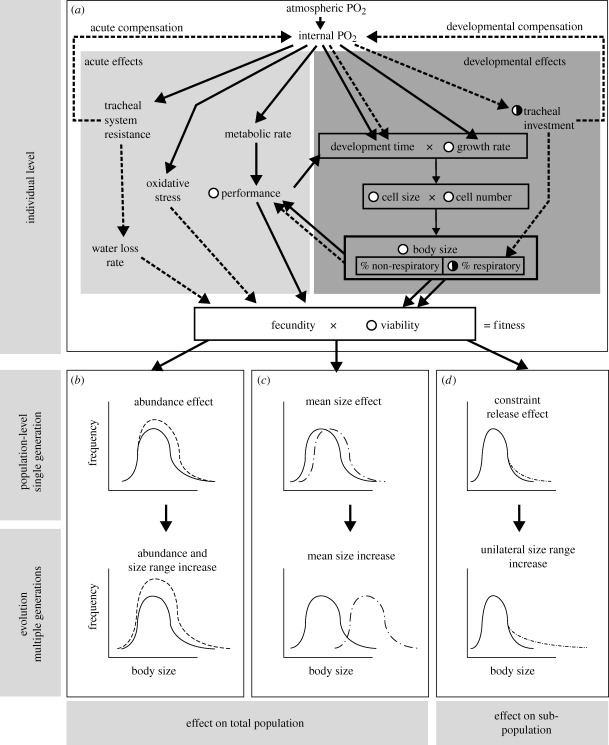Figure 2.
Plausible mechanisms by which atmospheric oxygen partial pressure (aPO2) might affect the evolution of insect size. Straight arrows indicate positive correlations, dashed negative, and both arrows together indicate nonlinear effects. Circles next to a trait indicate empirical support for an effect of hypoxia (open circles), or both hypoxia and hyperoxia (semi-filled circles) in Drosophila melanogaster. At the individual level (a), changes in aPO2 result in changes in internal PO2 that are damped relative to the environment owing to changes in the resistance of the tracheal system. Changing tracheal system resistance affects water loss rates, altering fitness in some environments. Internal PO2 causes direct, acute effects (left box), altering levels of oxidative stress and affecting performance variables such as flight or feeding. Changes in performance can directly affect fitness; for example, changing agility might improve foraging or the ability to escape predators. Internal PO2 also causes developmental effects (right box) via oxygen-sensitive signalling systems that control development time, cell size and number, that then affect body size and fitness. Developmental processes allow compensatory changes in respiratory structures; altering relative investment in non-respiratory structures such as muscles and ovaries that may affect fitness. The within-individual effects may influence average or maximal size of all or just the largest species. Some of the multiple possibilities include (b) alterations in abundance that affect the range but not mean size, (c) evolutionary shifts in mean size that increase over generations owing to size*aPO2 interactions or (d) effects only on the largest individuals or species, such as relief of a constraint on maximal size. Over multiple generations, individuals within the new population cycle through the changed aPO2, causing enhanced evolution of body size.

